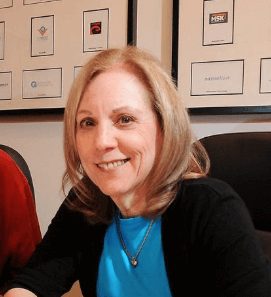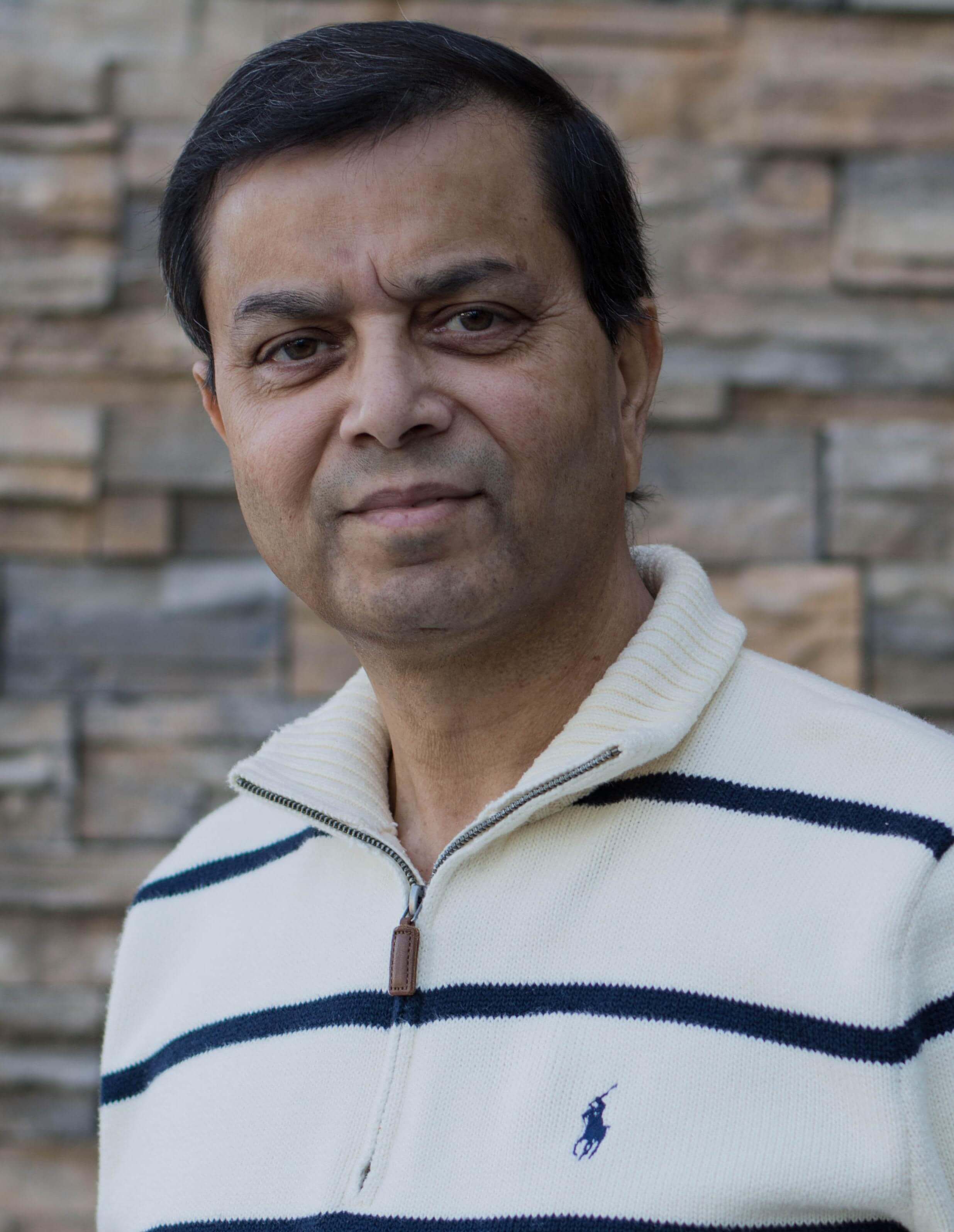What Are Teamwork and Collaboration?
Teamwork is the joint action of people working toward the same end goal. When people talk about teamwork, they mean more than just completing a task, however: they mean the work that comes from people working together effectively. The strength of a team comes from supporting each other, communicating well, and doing your share. Other characteristics that define a team include similar skills, autonomy, defined roles, defined leadership, and the resources to meet the joint goal. For example, imagine a group of people all pulling a rope. Not only do they share a goal, but they are using the same or similar skills. You perform team building exercises when your team needs to work on improving their role definitions or their communication skills. A team includes a designated authority figure who resolves their differences and makes decisions. Regardless of enmity between members, with a good leader, a team can accomplish their goals.
A collaborative team is a slightly different version of a traditional team because its members have differing skill sets. Although the members have varying areas of expertise, they still share similar goals, resources, and leadership. With their diverse set of specialized skills, they should be able to problem-solve as a group. The imagery of pulling the rope only applies when you rewind to the group who settled on pulling the rope in the first place. This group may have had an engineer explaining the mechanism of rope-pulling, a foreman deciding who would be on the rope-pulling team, and countless others defining their roles and using their expertise to solve the problem. For more information on how collaboration can vastly improve your company, see How Workplace Collaboration Can Change Your Company.
Collaborative leaders can span the scope of your business by engaging people outside of their direct control and getting them to work as a team with a common goal. When businesses talk about collaborative leadership, they mean distributed organizational structures that are either cross-unit, cross-functional, or cross-organization. These groups get employees at all levels with a stake in the outcome. This strategy is more about facilitating the group effort than about making decisions for the group. In other words, a collaborative leader leads the group’s process, not the group itself.
Another type of collaborative leadership involves performing inside an organization. This occurs when leadership shifts from person to person, based on the problem to be solved. Leadership then becomes the collaborative effort.
Therefore, when we talk about collaboration itself, we are talking about problem-solving with a group of people with different skillsets. However, what makes this type of group work compelling and successful can also make it fail. Different skill sets often come attached to people who think differently from each other, which can make communication among them difficult. Moreover, they frequently possess different priorities, which can cause surges of disagreement.
A big part of collaboration is coordination. Coordination is about achieving efficiency and about telling participants how and when they must act. This concept is similar to collaboration and teamwork because its goals are the same. If we return to our rope-pulling image, we see coordination as someone first organizing different groups and activities individually, with each group performing their own aspects of the work. It involves the group that brings the rope, the one that sets up the rope, the one that makes sure the ground is solid enough to stand on, and the one that pulls the rope. When these four groups have already completed their work independently, the coordinating person accomplishes the rope-pulling.
Of course, cooperation is an integral element of teamwork, collaboration, and coordination. Cooperation usually consists of two or more people sharing ideas or activities. You often share the information you generate from cooperation - while it is sometimes required, it is an informal process. Compared with teamwork, collaboration, and coordination, cooperation is the activity that requires the least amount of shared purpose and dependence on team members.
Communication is another key element of working together. It is the well-mannered approach to the workplace, requiring all members to talk to each other. It involves interacting in whatever way works best for you and your team personality and relationship-wise.
Even though these five terms have similar connotations, they differ in their level of purpose and dependence.
Project Management Guide
Your one-stop shop for everything project management

Ready to get more out of your project management efforts? Visit our comprehensive project management guide for tips, best practices, and free resources to manage your work more effectively.
Why Do Workplace Failures Happen?
The demand for a collaborative work product is only increasing, and the amount of time the workforce spends in team-related activities will also continue to increase, according to author Jeanne Meister. Even though it has become crucial to workplace success, however, collaboration is often difficult.
Workplace failures can happen when collaboration and team skills are absent. Your business can end up as an incohesive collection of competing silos, departments, and individuals. Without strong collaboration and communication skills, you can lose productivity and money. You need to add in other skill sets, such as decision-making and leadership to guide your group. Some other factors that can tank your team include:
- Forcing Collaboration: People can resent forced collaboration when they aren’t given clear evidence as to why the players make sense. Collaborations that come together naturally are often best because everyone understands what everyone else is bringing to the table.
- A Bad Team History: If these people had a negative experience working together in the past, it’s best to determine the reason as quickly as possible. Ask the hard questions early on to find out if leadership (or something else) was the issue. Repeating history will not yield a positive outcome.
- Poor Relationships: Even the best-structured groups can suffer if you have two or more team members who do not get along. You can mitigate this problem by limiting their interaction and designing group standards for meetings and communication. Some people will never get along - this is fine if everyone can comport themselves like professionals. If they cannot behave appropriately, perhaps they have no place on your team.
- Ineffective Meetings: Meetings without structure can cause your staff to have conversations that spin without purpose. Structure your meetings so that your staff knows the purpose and agenda going in. In addition, you should agree upon the meeting deliverables from the outset (i.e., either before or at the beginning of the meeting).
- Little Transparency or Inadequate Information Sharing: When you have team members whose work depends on that of other team members, they need to share their progress, concerns, and barriers. In order to stimulate this sharing, you need to develop trust among your members. Transparency goes a long way toward accomplishing trust.
- No Team Governance Processes: Maintaining structure keeps everyone on the same page. They know what to expect, have standards of communication and behavior, and are able to settle disputes. Setting up structured processes early and with the buy-in of your team helps keep disagreements to a minimum.
- Conflicting Styles of Decision Making: People process information differently. Some people process information quickly and are able to respond with an answer right away. Some people need to process away from the group and think slowly through all the options. Styles of decision making can differ significantly and cause eruptions of frustration.
- Behind-the-Scenes Conversations and Processes: Conversations and processes that cut others out erode the trust and confidence of your team. When you communicate outside the agreed-upon group settings or make decisions outside the group processes, it puts your project at risk.
- Competition: Competition is the opposite of collaboration. The spirit of competition requires people to withhold information, work ahead of others when they are capable, and actively try to exploit the weakness in their competitors. Competition within a team meant to be collaborative is inappropriate unless structured very carefully.
- Turf Wars: Akin to competition, turf wars often bring about the opposite of the desired effect. One of the main benefits of collaboration is that people (even with vastly different skill sets) can mentor and teach each other their skills. Breaking down barriers, whether they are between departments or individuals, builds everyone’s knowledge base.
- Poor Ownership or Engagement among Team Members: One main tenant of developing a collaborative group is that you develop buy-in from the team. This includes buy-in concerning the process, direction, and expected outcomes. If your team is not engaged, they will not be able to identify problems as they arise and will miss valuable opportunities.
What Is Good Communication?
Communication refers to how people send out and receive messages. This critical skill involves nonverbal cues, including active listening, managing yourself in the moment, and being able to understand yourself and others. Often considered a soft skill, communication is vital because it is the soul of your business. Good communication is at the center of everything successful you do within your company. A good communicator conveys their point in a simple and clear manner, people understand their message, and the work gets done. Good communicators:
- Relate their message to their listener on a personal level
- Always provide factual information
- Give specific information in a brief manner
- Ask questions to ensure understanding
- Ask questions for clarification
- Listen actively
- Look for nonverbal cues
Why Have a Collaborative Relationship?
Collaboration is more than just a buzzword for today’s companies. If you want your company to think as one, regardless of particular staff member’s function, collaboration should be more than just a word. Remember that teamwork includes an ultimate authority who makes decisions and resolves disputes for the team. Collaboration may not have an ultimate authority, but it should have a leader who understands the nature of the work. Collaborations should also have ground rules that the group itself has established. Collaborations push your deliverables to be more innovation and competitive in the marketplace.
You should form a collaborative relationship:
- When you cannot use a team or a customer-supplier relationship
- To get geographically disparate business units to work with a central team
- When different business units share a sales force or a brand
- To increase employee job satisfaction
- To allow your employees more flexibility
- To develop an interdependent organization
Thus far, we have focused mostly on the benefits collaboration brings to your company. However, there are benefits that collaboration can bring to individuals, as well. These include:
- Learning From Others' Experience: Pick up new information while you are completing real work.
- Saving Time: You’ll complete projects faster when you have people who already have answers. This phenomenon is called cross-sharing because you build a larger knowledge base.
- Creative Disruption: Different mindsets can come up with different solutions to the same problem. This helps you work out the best solution for your company. Teaching About Work and the Work Habits of Others.
- Dealing with Diverse Jobs Makes Better Leaders: Collaborations can make you a better leader by learning to manage different personality types and how best to motivate everyone as a group.
- Networking: Working in a collaborative team forces you to socialize with people with whom you may not normally interact. Further, you are giving them a bird’s eye view of your work ethic and capabilities. Should future work possibilities emerge, they are well equipped to remember you and your skill set.
Other benefits to you and your company include:
- Faster, better, customer-driven decisions
- Evolving strategic alliances with other companies
- Increased span of control
- Decreased conflict
- Opening your company to change
- Workforce buy-in for company
- Decreased cycle time
- Decisions based on principle, not power
- Makes your company competitive
- Increased productivity equals increased output
- Increased return on investment (ROI)
What Do You Do Before Setting Up a Collaboration?
While collaboration can spur multiple benefits for your company, it is not a one-size-fits-all answer to your company’s problems. The success of any collaboration depends on whether your team members are committed to working together, can respect each other’s differences, and have the needed skills. Before you consider a collaboration, whether internal or with other companies, you have to consider a number of factors and ask some questions. First, you should evaluate whether it is necessary. Collaboration for its own sake can waste precious time and resources. You should ask why collaboration is the best answer. Then, you should ask the following questions:
- Can you create the conditions for success?
- Is the team full of talkers or doers?
- Can you scale the project up if necessary?
- Are you collaborating with one company too frequently?
- If you are working with an external partner, are they vetting you as well?
- What are the other company’s values?
- What is the expected return on investment?
- Does your proposed team have the necessary experience and skill sets?
Is Collaboration a Skill?
Machines and computers are replacing many jobs that require skilled labor. However, according to a study by the National Bureau of Economic Research, the hottest jobs not only require skilled labor, but also demand social skills. Many people consider social skills soft skills, and therefore they are not always as valued as more discrete skills like science and math. These soft skills include the ability to cooperate, empathize, and be flexible, all qualities that contribute to relationship-building and collaboration. If a skill is a particular ability to perform a job, then it would follow that the ability to collaborate, which is in high demand, is in fact a skill.
If collaboration is a skill, then you can hone it. In order to, you must become proficient in a variety of areas:
- Communication
- Tolerance
- Compromise
- Authenticity
- Teamwork
- Consistency
- Reliability
How to Improve Team Collaboration Skills
Effective business collaboration does not just bring together a group of folks with disparate information. In other words, it is not just about collecting areas of expertise. An effective business collaboration consists of team members adapting their communication styles to one another so that they can understand each other’s point of view. The blending of these different thinking styles is what makes up the most successful teams — as long as you can manage them effectively. Experts agree that in order to have a successful collaboration, you need to implement intentional leadership. This kind of leadership considers and purposefully implements factors for good collaboration. This includes creating a culture and environment that makes it easy to collaborate. Some things that you can do to improve this environment include the following:
- Flatten out Your Hierarchy: This keeps competition as well as egos in check when your compensation structure does not show huge differences between people. Especially in professions where pay scales are public, groups that collaborate should be on an even playing field.
- Model the Behavior You Want to See: If you are driving this team, do not just tell them your expectations. Show them. Model the integrity you want your team to follow, and hold yourself and your team accountable. Take a stand when necessary, and rely on others.
- Educate Your Team: If you’ve chosen well, your team should have all the information it needs. What it may be missing, however, is the business and landscape information you can and should provide. This way, you can give the team problem-solving information outside of its normal expertise.
- Allow Team Leadership Roles to Vary: Leadership in a collaborative team should be based upon the work and the need. Leadership will emerge naturally and shift as the work evolves.
- Stay Curious: You should help your group realize viewpoints outside of its own. This includes the overarching themes and needs of its projects as well as what data it could be missing.
- Show Your Team You Care: Regardless of who you are dealing with, you should proceed in a respectful, caring manner. As a leader, you should be engaged with your people on a personal level.
- Be Able to Say “I Don’t Know”: This simple phrase shows that you are open and human. No one expects you to have all the answers, nor should you. You should be able to rely on your experts to teach and help you guide your project.
- Create the Infrastructure: It is often the processes (and not the people) that wreck projects. Take a hard look at your processes and identify bottlenecks early on. You should also create open channels of communication, whether face-to-face or remote.
- Create Group Problem-Solving: Support your team by bringing them together for open dialogue and sharing. By doing this, you allow them to develop cultural skills and engage in productive problem-solving.
- Foster Innovation: Use your collaborative team as a strategic advantage. If you have a diverse group of people with a diverse body of knowledge, you will get creative solutions that can help you innovate.
- Invite Healthy Disagreement: You should not be afraid of your team having conflicts or conflicting ideas. Healthy discourse can only benefit your project. Still, you should require professional conduct and respectful communication.
For more information on getting your team to work better together, see The Essential Guide to Getting Your Team Working Better Together.
How Do You Foster Teamwork?
Companies rely on their teams to get projects done. Whether they are large and diverse or small and specialized, teams can accomplish much more when given the opportunity to collaborate with one another. According to a study conducted by Gratton and Erickson, even though big, diverse teams are becoming increasingly critical, they begin to devolve as they grow. Further, the more expertise the members have, the more difficult it is for them to accomplish results. Finally, the study recommends four main areas to concentrate on to cultivate and maintain strong teams: executive support, solid HR practices, strong leadership, and good team structure.
Breaking it down, these areas give you the basics of how to build a successful team. The following are evidence-based practices that will help you do it right:
- Recruiting: It is critical to field the right team for your projects. Start by understanding the skill profiles of your employees. Just because someone works as an IT Specialist does not mean they do not have experience that could fill one of your other gaps. These profiles should include not only their work experience, but also their personal skills, involvement in other team projects, and any important achievements. During the recruiting process, you need to be upfront with your potential members about the time commitment. This way, they are can assess if they have the bandwidth to take on your project.
- Leader Choice: This should also be high on your priority list (if it is not your highest priority). Look for leaders that have task-oriented management skills, relationship-oriented management skills, and are able to flow between the skills based on the need. They will need to set goals about how the team will cooperate with each other and if necessary or prudent, compete.
- Executive Sponsorship: An executive sponsor often behaves as the senior member or the chair in a project. However, you also need your executive sponsor to act as a support structure for the environment you need to create. This includes helping to invest and cultivate that collaborative work environment.
- Human Resources Practices: Your HR should have their own contribution to making your team building successful. This includes supporting your company in building an informal support community and helping to train soft collaborative skills.
- Development of Collaboration Skills: Don’t underestimate the soft skills that lead to great collaboration. Concentrating on and developing these skills in your teams is as important as having technically skilled participants. These soft skills include being able to resolve conflict productively, negotiating, having and expressing concern for others, and joining in.
- Mentoring and Coaching: Mentoring and coaching should take place from your executive level on down through your company. Mentoring that happens spontaneously, due a culture open to it tends to be more successful. This means that spending time with your employees, focusing on coaching, and helping them build networks should not just be spontaneous, but a regular part of your work.
- Model Collaboration: With an executive team that actively collaborates, you should be able to find opportunities to make those collaborations visible to your employees. Even just filling in for each other shows a willingness to trust and develop relationships. Further, interactions in the open and in front of your employees helps you model what you want to see.
- Cultivate Your Community: This is another opportunity for your HR to practice supporting their teams. By sponsoring and encouraging group events and activities, HR can help to create a community spirit. Further, HR can help join people in networks based on their skills. For example, they can sponsor groups across an organization such as one whose members have skills and want to learn more around a specific topic.
- Develop Something Unique for Your Business: With the goal of developing relationships and networks throughout your company, create a culture that sets itself apart from others, whether it is monthly “get-togethers” at the local pub, a coffee shop, or a place where they can sit and chat with colleagues. How can you break people out of their respective roles for increased collaboration?
Other ways to foster teamwork include these tips:
- First, answer these two questions: Who are we? and Why do we exist?
- Develop a Charter. For more information on developing a charter, see The Essential Guide to Creating an Effective Team Charter.
- Work to overcome silo mentalities.
- Work to overcome process inconsistencies.
- Develop a team shorthand to understand situations and issues.
- Run more efficient meetings using agendas and expected outcomes.
- Work on strengthening relationships.
- Improve communication skills.
- Define the working relationships.
- Clarify everyone’s responsibilities and accountability.
- Provide the team tools that support collaboration.
- Operate on agreed-upon principles.
- Generate and synthesize new ideas.
- Organize the process (charter).
- Build trust.
- Create transparency.
- Unlock creativity.
- Set realistic expectations.
- Set clear objectives, goals, and expectations (SMART goals).
- Promote ownership.
- Lay ground rules.
- Deal with change in a positive way.
- For more information about assessing your team, see Everything You Need to Know about Team Assessments.
- For more tips on team-building activities, see Top Team-Building Experts Recommend the Best Activities to Match Your Team’s Needs.
Collaboration and Teamwork in an Educational Environment
An educational environment is an excellent opportunity to teach not only technical skills, but also soft skills like collaboration and teamwork. Being in school allows people to try new things, make mistakes, and learn hands-on without fear. Further, you push your students’ higher-level thinking skills by forcing them to think about different points of view. This also develops social skills, positive cultural relations, self-esteem, and self-management skills.
Some techniques to teach collaboration skills include:
- Put Time Limits on Work Groups: Time limits force your students to think and work quickly. Natural leadership skills will also bubble up.
- Institute a “We All Answer” Policy: Make your policy that everyone in a group should offer a suggestion while brainstorming. This helps you avoid having only your stronger students participate.
- Institute a “No Bad Ideas” Policy: This puts everything your students come up with - regardless of how outlandish - down on paper and gives it a chance without judgment. This encourages them to think creatively without rejection, which gives them confidence.
- Improv: This may seem like an extreme way to teach collaboration. However, improvisational theater forces your students to work together and think together immediately. Many fields outside of theater have used improv extensively as a way to develop people’s ability to communicate and creatively solve problems. Put your students on teams and have them practice on the spot scenes.
Here are some techniques to teach teamwork skills:
- Assign Group Roles for a Task: Each member of the group should have a job, such as leader, timekeeper, on-task manager, or note taker. Each student should do the job assigned during the activity, and then rotate as the activity changes. Afterward, discuss what happened during the activity, and look for what happened to the product when students deviated from their assigned roles.
- Give Everyone a Chance to Be a Leader: Some students are natural leaders, and some struggle with leading. Start with small, contained activities, and have each student lead their group or class through an exercise.
- Model the Behavior: Show your students how to play on a team while they are leading by modeling the type of behavior you want to see.
- Highlight the Significance of Every Job: Ensure that every student understands why the role they are assigned is important. Have them tell the class how their role leads to the end product.
Getting Education in Team-Based Learning
Team-based learning (TBL) is a type of small group learning that is structured to help students learn to work in teams. They prepare their materials outside of class and apply it while in class. This structure grades students as individuals and as a team. It helps them verbalize their thinking within their team and about other teams. TBL is evidence-based, and usually taught in modules. Instructors may use several methods to teach TBL, including those by L. Dee Fink, Michaelsen, and Koles.
How Do You Foster Collaboration?
Today, fostering collaboration is a hot topic in business. Some businesses are looking for answers on how you implement, teach the soft skills, and build a collaborative environment. Others are looking for ways to improve their technology game in order to make collaboration easier. According to technology experts around the web, some current trends in technologically-driven collaboration include using the Internet of Things (IoT), software as a service (SaaS), and your own devices. In this section, our experts will share some of their experiences developing collaborative teams and give tips on the best ways to get your team to collaborate and communicate well.
For team collaboration, I recommend the following for managers:
- Care: Care about each member of your team. Know their likes and dislikes. Treat them to their favorite bar. Ask them about their family. Know their birthdays and anniversaries. Even more so, value their input, opinions, and ideas. A team will work together more easily when they know the leader and the team care about them.
- Commission: Commission the team members to lead meetings, initiatives, and projects. Make sure everyone has a role they own in the effort.
- Communicate: Does Bob prefer text, while Karen loves calls? Does Joe do well with FB Messenger but slack off on Slack? While having a unified communication system is ideal, it's not realistic — unless you have a system to integrate the different mediums. And, don't just know the communication medium each team member prefers. Know their styles. Bob may be more indirect, while Karen may spout out every idea that comes, and Joe may be a natural skeptic. It's hard to collaborate without first understanding how each team member communicates.
- Contrast: When endeavoring in a collaborative effort, contrasting and divergent ideas must be held together. Many innovative breakthroughs happen through lateral thinking and not from intense focus in one area.
- Example from Failure: Before training other teams as a corporate trainer, I led a team of my own. A crisis occurred where I lost half of my aid team at a bus station in a city of 7 million on the way to the airport. Another team member with me lost her plane ticket (a 16 destination non-redeemable paper ticket). Instead of caring for this team member I was annoyed; instead of requesting input and ideas from the rest of the team for solutions. I focused on myself. I tried to find the team and the ticket back where we left them to no avail. I checked the only places in the bus station I thought them to be—not there either. Also, I had no communication mediums—we didn't have a local cell phone to reach the other group. It wasn't until a kind local lady gave me a suggestion to look elsewhere that I broke out of my narrow focus and found the rest of the team. Long story short, after the lady opened my thinking of where the team might be, I took a risk going to the airport one ticket shy of getting the whole team on the plane. Luckily, the risk paid off as the ticket was at the airport in the lost and found! From then on I decided to put the focus off of myself and widen it to the whole team.”
I can offer tips on what's worked for managing my team. Without goals and specific, measurable, attainable, realistic, and timeline objectives, it’s easy to veer off path and get caught up chasing what’s urgent instead of focusing on what’s important. I meet with my team every Monday to establish goals for the week. This is when we discuss goals for the week, blockers, suggestions, concerns, and so on. This is a hugely important part of our collaborative culture - everyone "owns" the success of the company as well as the success of their team and themselves.
Being ultra-collaborative is hard work, don't get me wrong, and that's why we take it seriously and work hard to make processes more efficient. Every week, we assess capacity and workload and collaborate on priorities in order to achieve balance. To ensure no one burns out, we adhere to a strict eight hour work day and frown upon work over the weekends. That way, we can all come in energized Monday morning and ready to tackle another week. We also use a bunch of collaboration tools. It’s important that we are in lock-step with each other."
The number one thing any team can do (and it's the thing that works only as high as you take it) is build trust. Communication is huge and that's likely the kind of answers you will get, but communication like that only comes from trust.
The Five Dysfunctions of a Team has a few guides on how to build trust. Asking about people's backgrounds and personal stories is a great one. It doesn't feel productive in the beginning.
Small example: Let's say we're talking about trust and your perception of me is that I don't follow the rules and I'm disrespectful to authority. In general you perceive me to be a jerk so you don't want to communicate at all with me. In our trust meeting, I told you I came from a single parent household and my mom worked very hard but wasn't home, and as a result most of my life was spent on my own and figuring things out. Immediately (in this poor example), you see that perhaps I'm not doing anything intentionally, I hate feeling managed and like to figure things out on my own. I likely don't know I'm being perceived as a jerk for doing so . . . So much good comes from these meetings.
These trust meetings are good but they are much more powerful when the team can unify behind a common goal, a vision. Therefore, during these meetings it's important to reiterate what the most important thing is. If reducing costs is the most important thing to the company, then it changes what marketing plans we can implement and, in particular, might mean using our current resources and teams. If reaching a certain demographic is the goal, then how does the entire team work toward that?
Often teams get departmentalized and sort of siloed and they don't realize that they can impede or enhance another team's productivity. For example, SEO work often involves editing htaccess files and doing 301 redirects and adding small javascript files to the server. If an organization moved all that type of work to the developers, then there's this crazy war around what is important. The SEO says he wants more traffic and the developers says they need to work on bugs. Both are right, but without a guiding vision, they won't know what the priority is."
In an era of digital disruption and change, Dr. Presser’s integrated methods are being used to design collaborative culture, and to produce business results.
“People like best what they do best, and they do best what they like best,” says Dr. Presser. Keys to developing team collaboration are:
- Align each person's job responsibilities (at least in part) with the specific kind of team contribution that person will find meaningful.
- Determine the modes of teaming that are most-needed for a particular team’s mission, and make sure that they are represented on the team.
Here is some helpful terminology:
- Role: A person’s affinity for one or more specific modes of service to the needs of a team.
- Coherence: Expressed as positive, flexible, constructive teaming behaviors under varying conditions of stress and ambiguity.
- Teaming Characteristics: Individual styles of responding and relating to others; subject to situational context. Understand and apply the following Elements of Team Operation (easily learned ways to communicate in alignment with a person’s mode of contribution):
- Role‐fit: An appropriate match between a person's role and their assigned set of job responsibilities, raising individual performance and engagement.
- Team‐fit: Structuring a team to include the roles that are best‐fit to the team’s mission, to optimize overall team performance.
- Role‐pairing: Known, replicable synergies between specific roles, which improve resilience and team chemistry.
- Role‐respect: The unique manner in which people of different roles experience appreciation and respect, used in management to build trust and team stability.
Dr. Presser continues, “The most important thing to have when developing a collaborative culture is a clear understanding of teaming needs and challenges, and the most important thing(s) to look for are the teaming qualities that will ensure success under those working conditions. To build positive, collaborative team interaction it is essential to recognize that a team has a life of its own, and that different modes of teaming can be just as important to collaboration and productivity as different areas of expertise are to the work that needs to be done.”
It is not enough to tell team members they need to collaborate. Managers need to put things in place to motivate people to collaborate and to enable them to work effectively together.
To create a culture of collaboration among team members (in tack teams or cross-functional teams) managers need to ensure three structural elements are in place:
- Shared goals: Required to make collaboration desirable and to motivate team members to cooperate.
- Clear roles and agreement on decision authority: Required to facilitate decision making and minimize friction among colleagues who do not have the authority to take action on their own.
- Transparency of communication: Enhances effectiveness by ensuring team members have the information they need when they need it.
In order to sustain a culture of collaboration, managers need to ensure team members have four skills:
- Building and sustaining trust: The foundation of any interaction.
- Conflict management: Differences of opinion are neither good or bad; it’s how conflicts are resolved that are positive or negative.
- Influence skills: Gaining the support and commitment of people over whom we do not have direct authority.
- Decision involvement: Knowing when and how to involve others in decisions to ensure high levels of decision quality and decision acceptance.
My recommendations for forming collaborative teams include:
- Give Your Team a Chance to Bond: In my experience, one of the first steps to building a collaborative team is giving them an opportunity to bond. This can be done in a variety of ways. You can go around and do introductions in a fun way, host a party, play video games, etc. The important thing is that you invest the time at the beginning to allow your team members to become comfortable with one another. This will accelerate the process of forming, norming, and storming so that you can quickly get to performing at your peak.
Whenever a new member of my team is introduced, I like to take them out to a free lunch at a nice restaurant somewhere. Who wouldn’t be excited about a nice, free meal during work hours, and a chance to interact with your team on a more personal level?
- Establish Effective Communication Channels: Once your team has had a chance to bond, be sure to establish effective communication channels so that they begin to collaborate and get work done. The channel might be different depending on the type of work you are doing, your proximity to your co-workers, and the technology you have available to you.
There are also tools that help you to collaborate on projects together directly; you can experiment with platforms that allow you to work on projects in different phases and communicate with your team as you go.
- Make Meetings Meaningful: One of the last steps to effective team collaboration is making sure that all the meetings you hold are meaningful. This is no easy process; it requires a lot of honesty, careful auditing, and open feedback from your team. Over time you can adjust how many meetings you hold, how long they are, who attends, and what you address.
With time, my team has come to like using the Scrum method. We meet for about ten minutes every morning and quickly talk about what we are working on, what progress we have made, and what roadblocks there are for our success. This allows projects to transition easily from one employee to the next.
Other points include:
- The more difficult (read engaging) a team activity is, the more effective it proves to be for inculcating a team spirit. Cooking at a picnic will naturally be more difficult than cooking in your kitchen. Hence, it will be more rewarding in terms of team building.
- Adding adventure to team building. Adventure sports like river rafting or mountaineering, which require team efforts, are dangerous but most engaging. People are required to entrust their lives to other members of the team and as a result, these kind of sports are the best team building activities that can be organized.
- The last one that I am sharing is an extreme case and not the type one would want to participate in. However, this one is by far the most powerful one. A common thread among all the team-building activities is the presence of a common goal. Sometimes, teams form not because of a planned activity, but the presence of a common peril, which cannot be surpassed with individual effort. This peril may be a common powerful enemy, a person, a situation, an unreasonable boss, a potential mass layoff, or anything that hurts people equally. People form teams to collaborate in their agenda to fight this common misfortune and in the event of a win (or even a loss), the team spirit lingers on even long after the battle is over. My general observation is that relationships formed in the face of misfortune are the most lasting ones. They prove to be the best team building activities.
To get teams to collaborate, consider the following:
- I give them tasks that are not only impossible to achieve individually, but also challenging. These tasks are highly possible when attempted in teams.
- While choosing such a task, you need to plan carefully. The task should be neither too easy nor so difficult that it drains the team's motivation. In addition, every individual should be able to contribute to the task in a unique way. This helps everyone feel important and keeps them engaged.
- This sense of achievement translates into team bonding and has a visible positive impact on work.
For new managers looking to foster communication, employ these tips:
- My first and most important tip is to have patience. Do not jump into team building with half-knowledge of the team members. When you start working with a team, you will get to know numerous aspects of their personalities and decide accordingly the best way to design team building activities. There is no one-size-fits-all solution. Understand your team and then decide.
- Utilize this time to gel with the team. Try to build trust for yourself. Trust in the leader is the best guarantee that a team activity will be successful. Eventually a team-building exercise is also a team activity and requires support from the team.
- Once you have a handle on the team members' preferences and personality, engage them in a team task challenging enough to extract the best out of them.
- Try to not be in a supervisory role and participate equally. This helps to gain acceptance with the new team.
Though we work primarily in construction, the same idea of demolishing information silos and providing collaborative tools can apply to collaboration in any industry. We believe it is one of the reasons that software [has] been so successful. Everyone can participate on these platforms and get open access to the information within.
People like to collaborate. Therefore, when you provide a way for them to work together that also shows the product of their efforts, collaboration will naturally follow. The trick is finding the right environment for your team. Do that and they will do the rest."
The best way to collaborate with a team is twofold. First, learn what it takes to be a good facilitator. Know how to steer conversations, how to manage tangents, and when to cut dialogue when you have enough input. Second, learn each person’s communication preferences and learn to communicate with them on their level and inform them your preferences for communication. Lastly, if you have the ability to learn each person’s personality, strengths, or workstyle preferences, share those upfront or take one of the assessments. Knowing everyone’s preferences takes the guesswork out of communicating and working together.
The strategies I would recommend to a new manager to foster effective team collaboration are as follows:
- Know your role on the team. Are you steering, guiding, leading, or participating?
- Stand by what you say. For example, be upfront with what you expect from the team. If you want their input so you can make a decision, let them know that so they don’t think they’re making the decision.
- Get out of the way. Trust your people to let their strengths shine. Draw them out and support them.
- Be a cheerleader. Support the effort. Make sure to support the team effort and goals.
“The very first thing that you need to do when trying to inspire a team to collaborate is to explain the task at hand. This may seem like a fairly obvious thing to do, but many leaders forget this part and jump right into the work. Letting the team know the objectives, team roles, the importance, etc. will allow the whole team to have a common goal, something that everyone can impact and work towards. Another important aspect is the atmosphere within the team. There needs to be an apparent community. It shouldn’t be five individuals trying to get their own work done, but instead a group of five doing completing one big-picture task while doing separate parts. Respect, openness, and support are extremely important to establish in a team.
Giving your own personal opinion is very valuable when working with a team. You definitely do not want to stay quiet and let everyone else make the decisions. You could potentially be offering a completely new and different perspective that the rest of the team didn’t think of. There’s a reason you are on the team. But at the same time, allow others to voice their opinions and don’t shoot down any input. This will create a negative atmosphere and the team will be less willing to work with each other.”
I have found this simple tool helps teams forge greater appreciation for the diversity of work styles, while at the same time highlighting potential weakness and conflicts in the workplace based on behavioral style. Being aware helps with creating greater understanding. This leads to less conflict and greater synergies on the team."
Another big thing we do annually is we send our employees from different locations out to conferences such as Apple's WWDC in California . . . It is a time that works in effectively bringing people together. I make sure to not use a top-down approach. Even as a co-founder myself, I value opinions from all members of the organization. With a company-wide understanding that you won't ever be ignored, this opens the floodgates for crucial communication, a necessity for future collaboration. Finally, lead by example and show them that you're there to support them on the ground level. Set goals, but don't micromanage. This will drive people to work great independently but with a fostered culture, this will later translate to effective team collaboration."
Developing an organically creative and collaborative environment, especially in a working world that relies on individual productivity and mobility, can be rather challenging. While “collaboration” has become a buzzword in business today, the reality is that in our era where technology is king, collaboration is the most effective method of problem solving.
My first step is to create the right environment. This means not creating a culture where systems measure success solely on individual performance. These types of milieus create an atmosphere where workers focus on their own personal progress and discourage the very idea of collaboration. The goal is to create settings that reward independent efforts while including methods that incentivize teamwork in such a manner that collaboration is an integral part of accomplishing work-related tasks.
The second step is to use the right tools. Too often team members cannot collaborate easily due to disparate job roles or a lack of understanding regarding an organization as a whole. Find the right tools to build a bridge of understanding across departments and roles within your organization.
The third step is to identify collaborative leaders. Keeping in mind that leadership styles vary, the key is the ability to identify and empower managers who empower the staff and thrive in collaborative environments as second nature. This is crucial to making the organization more collaborative overall.
Businesses today operate in an increasingly complex and ever-changing landscape. Therefore, now more than ever, companies must learn to rely on the intelligence and resourcefulness of their people to thrive. Collaboration is no longer optional. It is an essential ingredient for organizational survival.
To energize teams, encourage creativity, and promote workers’ production and level of satisfaction, take the following steps:
- Deter and destroy silos. The mindset of hoarding information department to department will reduce efficiency in the overall operation, reduce morale, and may contribute to the demise of a productive company culture. A silo mentality becomes synonymous with power struggles, lack of cooperation, and loss of productivity.
- Build a collaboration strategy. Capture and communicate with frequency the cumulative intellectual capital present in the workforce. Educate your staff so that they understand that collaboration is more than the technology is supports. It includes a change in attitude and behavior of people throughout an organization. Stress that successful collaboration relies on the people who believe in it.
- Manage through shared purpose and vision. Adopt and communicate your vision in a way that that drives people beyond the boundaries and limits of the past while realizing the true power of a vision can only come into play when the employees themselves have had some part in its creation.
- Build trust. Trust is the very foundation of collaboration. Trust is the belief or confidence in the reliability, integrity, and honesty of others. It is the glue that holds any group together. Suspicious and cynical employees will not collaborate. Sharing knowledge demonstrates that the leadership has put their trust in employees.
I would advise a new manager that when building a team, finding the right ingredients for a high performing team isn’t always about getting the smartest people together - it’s about finding personality and skill sets that complement each other. I would also recommend the following principles:
- Keep communication lines open and respectful. Collaboration depends on communication. Every member of the team should be able to communicate equally and with authority, thereby, promoting openness, and, later, ownership of the outcomes.
- Foster individual perspectives. Teams offer diverse perspectives and unique ways of thinking. Make sure every team member is heard clearly and that their ideas are unique, valuable, and concise.
- Define consensus and collaboration. Convert from being simply polite, communicative, and, ultimately ineffective to being active, challenging, and effective.
- Respect collaboration. At its core, it [collaboration] is about pursuing new ways of looking at ideas and varied perspectives that allow a team to reach clearly stated goals and achieve better solutions.”
Foster Collaborative Teamwork with Smartsheet
Empower your people to go above and beyond with a flexible platform designed to match the needs of your team — and adapt as those needs change.
The Smartsheet platform makes it easy to plan, capture, manage, and report on work from anywhere, helping your team be more effective and get more done. Report on key metrics and get real-time visibility into work as it happens with roll-up reports, dashboards, and automated workflows built to keep your team connected and informed.
When teams have clarity into the work getting done, there’s no telling how much more they can accomplish in the same amount of time. Try Smartsheet for free, today.















